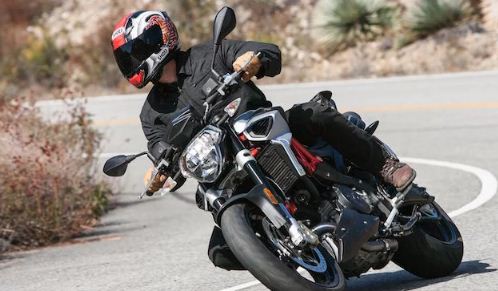
It doesn’t matter if you ride a chopper, a scrambler, a café racer, an adventure sport, or a dirt bike, your favorite machine will be reduced to scrap metal if you don’t ride it properly. Yes, it’s tempting to take your motorcycle out to show off.
After all, you spent so much time, money and effort into making something you can truly call your own. But it shouldn’t have to result in a costly accident. Here are some motorcycle riding tips that just might save your life:
Contents
Ride With (The Right) Attitude
Having the right motorcycle equipment will definitely reduce the risk of accidents, but having the right mindset is equally important. After all, what good is a crash bar if you flip your bike over attempting while attempting a wheelie?
If you’re not on a race track, there is no need for you to show off how many cc’s you have. When riding, always leave your ego at home. Remember: nobody cares about how fast you can go, save for the officer who’s eventually going to arrest you.
This holds true especially more in urban settings. If you’re riding down busy city thoroughfares, always remember to be patient. Take an extra second or three to look around before you make a pass, or pull away from the curve, or if you’re turning into a corner. That extra second might just save your life.
And as always, always pay attention. You can have all the training and equipment in the world, but if you’re not concentrating on the road, it’s all going to be for nothing.
Gear Up
There’s an old saying: dress for the crash, not the ride. This means that, while a leather jacket and a beret might look cool, it’s not going to save you from a life-threatening accident. It doesn’t matter if you’re going to the corner store or if you’re going five states over: always wear protective gear.
Sure, motorcycle and personal injury laws in states like Utah don’t require helmets for people over the age of 21, but be smart and wear one anyway. Other than gearing up, learn how to use your motorcycle effectively. ABS, or Anti-Brake Locking Systems, are a godsend, don’t believe anyone who says otherwise.
But even with ABS, learn how to use both front and back brakes properly. Crash guards aren’t the coolest thing to look at, but they will save you money on costly repairs.
Defensive Riding
Defensive riding refers to a style of riding that encourages riders to be vigilant on the road by being proactive about avoiding possible threats. One of the first things defensive riding teaches motorcycle riders is to assume that car drivers will have a hard time spotting a biker, regardless if they’re in a blind spot or not.
This helps riders avoid sudden (at least, sudden for the biker) movements from cars by giving them a wider berth and extra space for braking and turns. It’s also a good idea to keep your eyes farther up the road than you think.
That extra 20 feet of vision might just help you avoid an obstacle better than if your eyes were aimed further down.
In general, riding a bike definitely carries more risks than driving a 4-wheeled vehicle, but between the two, the former can offer a sense of freedom that cars can never do, and with a little preparation, that risk of danger goes down while the sense of fun goes up.